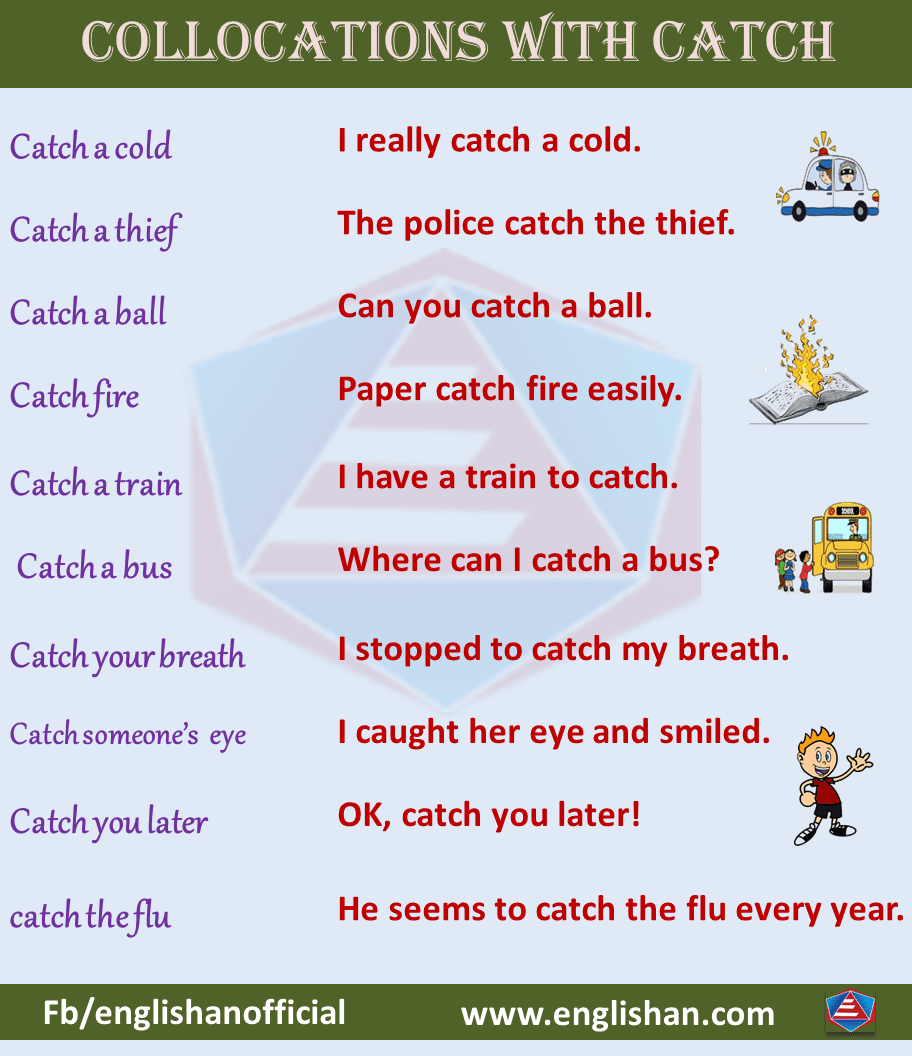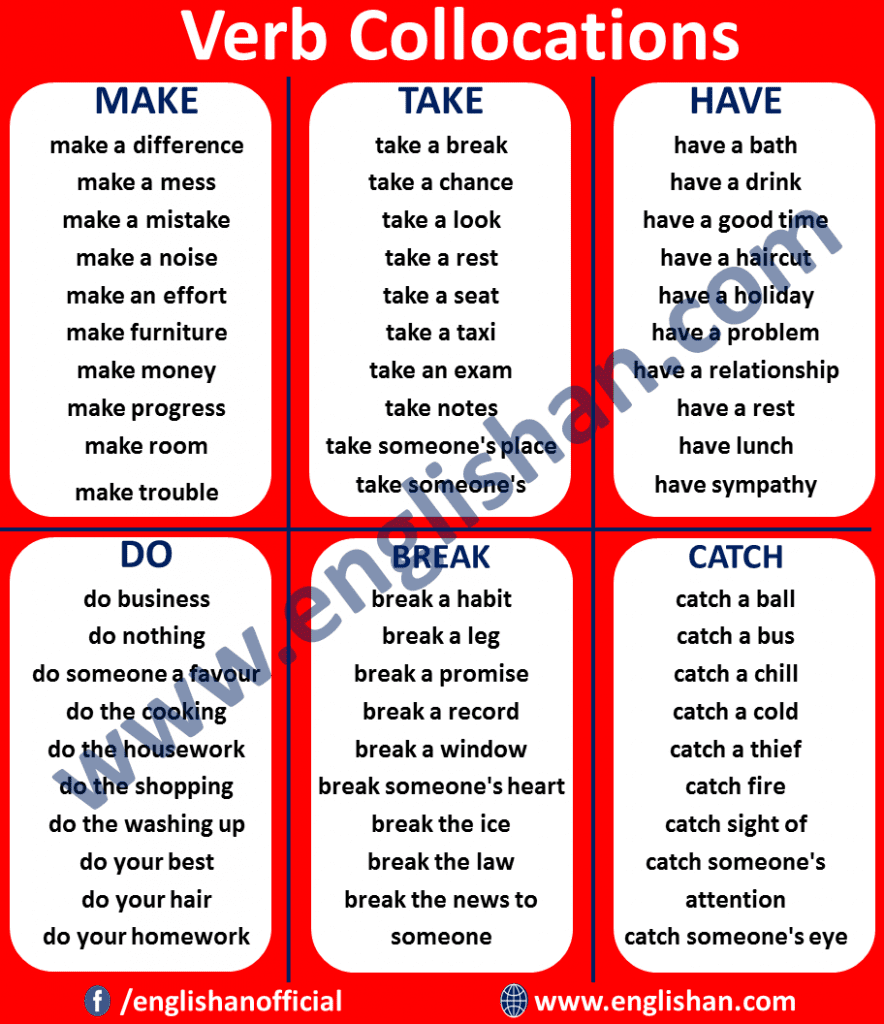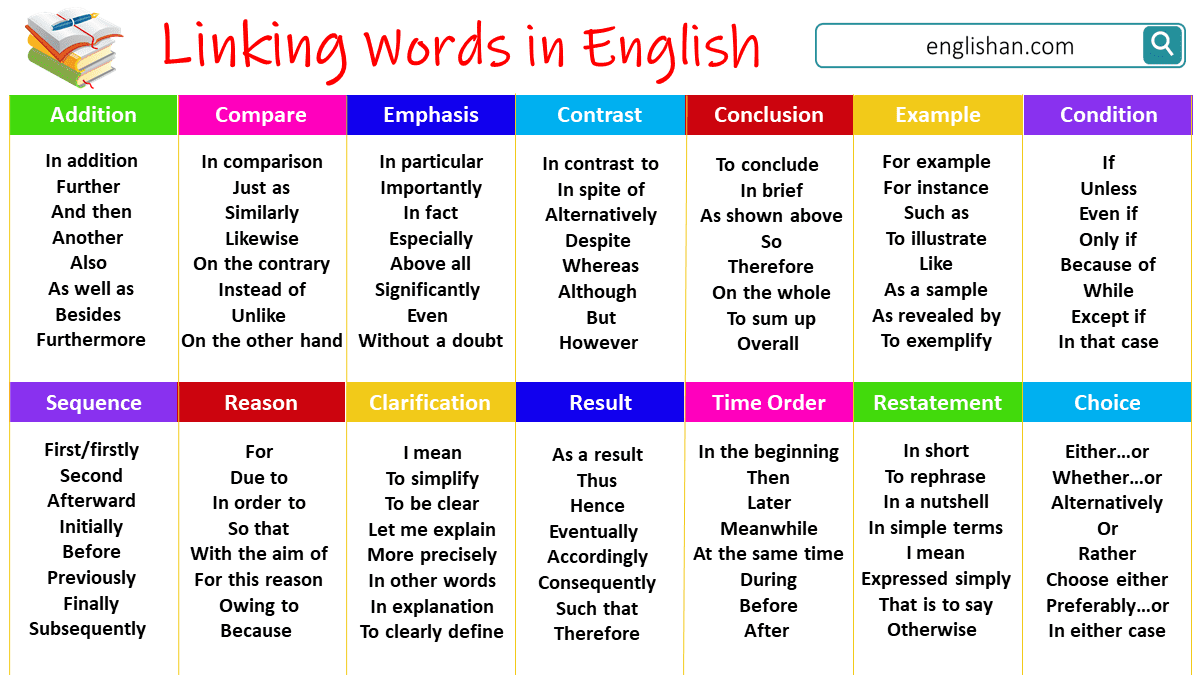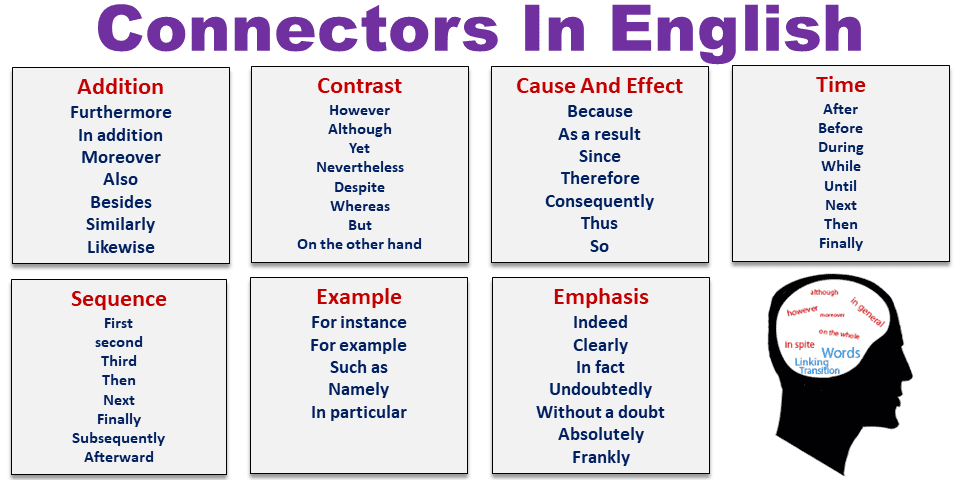Contents
Collocations are pairs or groups of words that are often used together in English. Using collocations makes your speech and writing sound more natural and smooth.
Native English speakers use collocations naturally, but non-native speakers need to be careful when using them. Even a small mistake in a collocation can change the whole meaning of a sentence. You can’t just replace a word in a collocation with a similar word, because it will change the meaning.
Examples of Correct and Incorrect Collocations
Using collocations correctly can make you sound more fluent. Here are some examples to help you understand:
✅ Correct Collocation: fast food
❌ Incorrect Collocation: quick meal
✅ Correct Collocation: strong tea
❌ Incorrect Collocation: powerful tea
✅ Correct Collocation: burst into tears
❌ Incorrect Collocation: blow up into tears
Some collocations are only used in certain situations. If you use them in the wrong context, they won’t sound natural.
✅ Correct Collocation: excruciating pain
❌ Incorrect Collocation: excruciating joy
✅ Correct Collocation: catch a cold
❌ Incorrect Collocation: catch a-hot
The best way to learn collocations is to read and listen to native speakers.
Types of Collocations
Collocations can start with adverbs, adjectives, nouns, or verbs. Here are some of the most common types of collocations:
Verb Collocations
- Make: make a mistake, make a promise, make a wish, make a difference
- Catch: catch a bus, catch a cold, catch a thief
- Pay: pay attention, pay the price, pay a visit
- Save: save money, save energy, save time
- Take: take a bus, take a look, take a break
- Keep: keep calm, keep in touch, keep quiet
- Get: get ready, get lost, get angry
- Do: do the dishes, do the laundry, do a favor
- Feel: feel free, feel happy
- Have: have breakfast, have fun, have a party
Adjective Collocations
- Deep: deep thought, deep sleep, deep trouble
- Heavy: heavy rain, heavy traffic, heavy smoker
- High/Low: high energy, low expectations
- Strong: strong-willed, strong tea, strong feeling
- Tall: tall building, tall man, tall order
Using Collocations Correctly
Using the correct collocation in the right context is very important. Even if the collocation is correct, using it in the wrong situation will make it sound strange.
Examples of Collocations in Sentences
- I will not give you breakfast until you make your bed.
- Don’t disturb John. He seems to be in deep thought.
- Please feel free to contact me if you have any further questions.
- He married Sharon against everyone’s advice, and now he’s paying the price.
Tips for Learning Collocations
The best way to learn collocations is to immerse yourself in natural language. Read books, watch movies, or listen to podcasts by native speakers to understand how collocations are used in real conversations.
Summary
Collocations are an important part of speaking and writing fluent English. Pay attention to how words naturally go together and practice using them in context to make your language sound natural.





FAQs:
A verb collocation is a combination of a verb and one or more words that are commonly used together. These combinations sound natural to native speakers.
For example:
1. Make a decision
2. Take a shower
3. Give advice
4. Do homework
In each case, the verb pairs naturally with the noun or phrase that follows.
The 7 types of collocations are:
1. Adjective + Noun – Strong coffee, heavy rain
2. Verb + Noun – Make a decision, take a break
3. Verb + Adverb – Speak clearly, drive carefully
4. Noun + Noun – Football team, traffic jam
5. Verb + Preposition – Believe in, apologize for
6. Adverb + Adjective – Deeply upset, completely wrong
7. Noun + Verb – The baby cries, the car starts
Here are 12 examples of collocation words:
1. Make a decision
2. Take a break
3. Give advice
4. Do homework
5. Have a conversation
6. Catch a cold
7. Break a promise
8. Keep a secret
9. Run a business
10. Lose weight
11. Pay attention
12. Reach a conclusion
The difference between phrasal verbs and collocations:
Phrasal Verbs are verbs combined with words like prepositions or adverbs, creating a new meaning.
Example: Give up (to quit), Look up (to search).
Collocations are words that often go together naturally. The meaning doesn’t change.
Example: Make a decision, Take a break.
So, phrasal verbs create new meanings, while collocations are just common word combinations.
Read More






